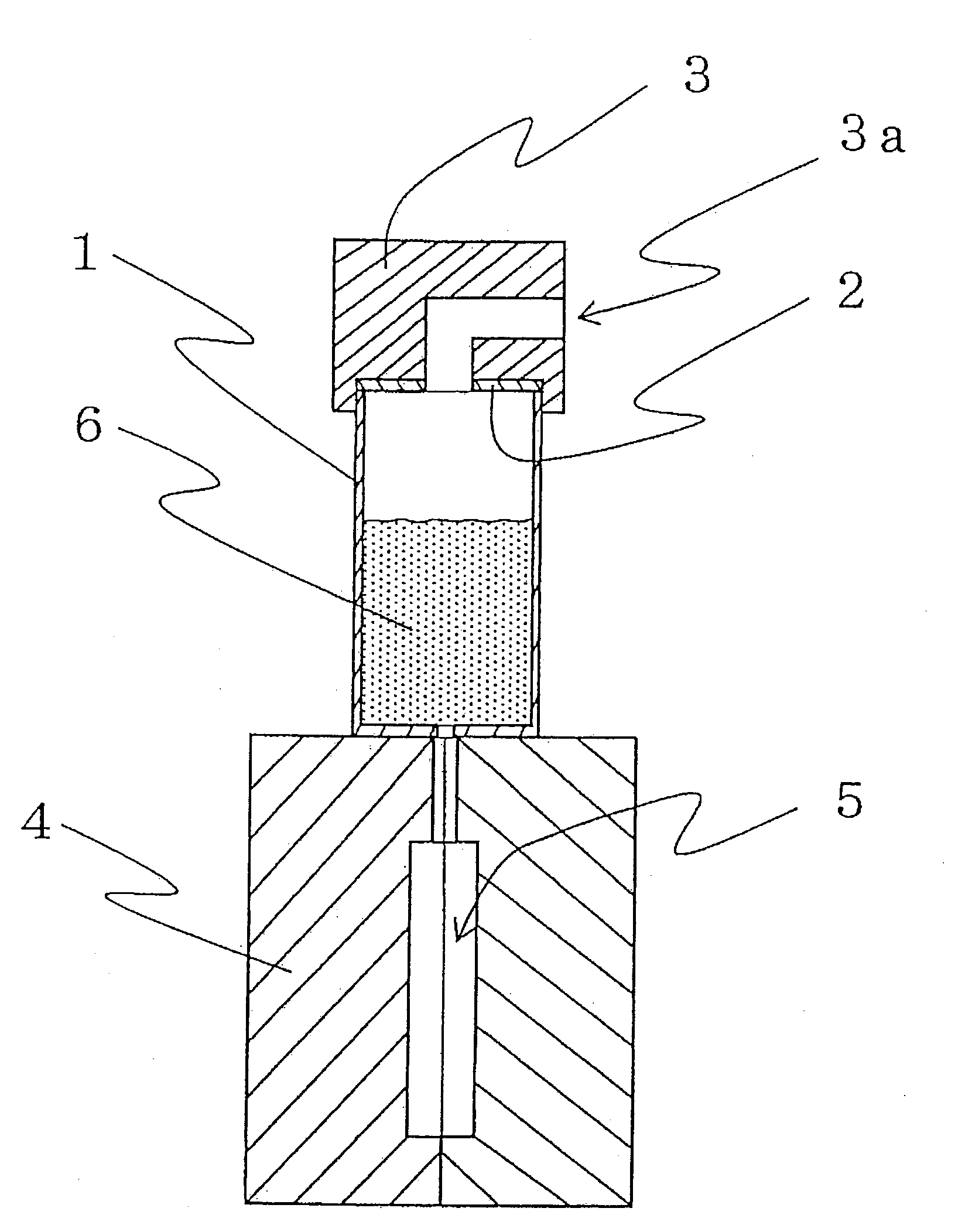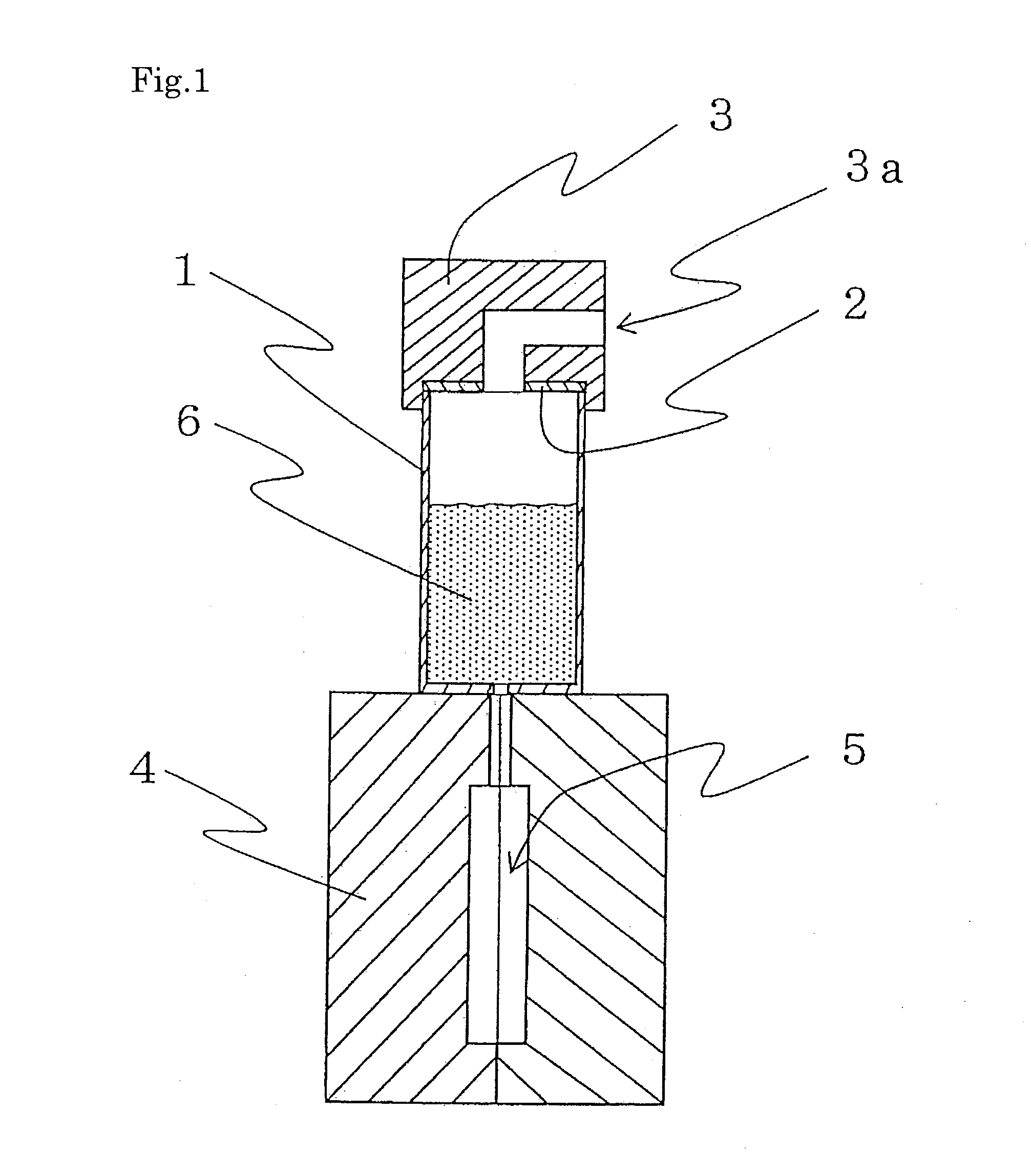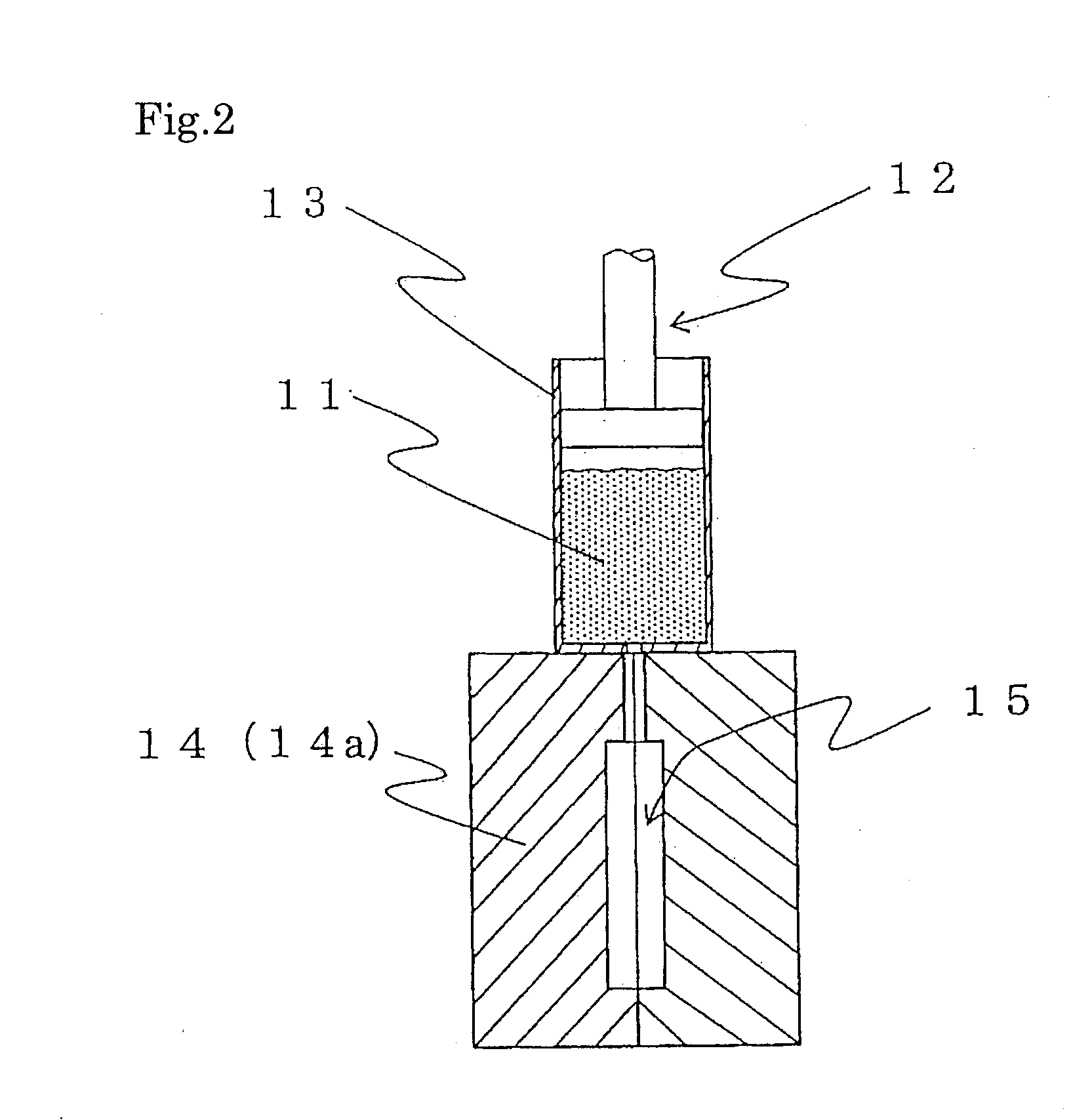Process for making molds
a mold and mold technology, applied in the field of mold making process, can solve the problems of imposing biohazard, affecting the mold quality, and affecting the mold quality, and achieve the effect of improving collapsibility
- Summary
- Abstract
- Description
- Claims
- Application Information
AI Technical Summary
Benefits of technology
Problems solved by technology
Method used
Image
Examples
first embodiment
The First Embodiment
[0046]
TABLE 1Composition (except water) of the Aggregate Mixture 11Silica sand (Flattery sand):100 wt % Starch (Dextrin NSD-L, made by Nissi Co., Ltd., Japan):1.0 wt %Surfactant (polyglycerol fatty acid ester):0.03 wt % Citric acid (made by Fuso Chemical Co., Ltd., Japan):0.5 wt %
[0047]In the first embodiment, the aggregate mixture that is composed as shown in Table 1 and water of 4 wt % are mixed and stirred with a mixing machine (a desktop mixer, made by Aikohsha Manufacturing Co., Ltd., Japan) at 200 rpm for about 5 minutes. Thus it foams, to prepare a foamed aggregate mixture 11. The foamed aggregate mixture 11 is then poured into a cylinder 13 of a plunger 12, as shown in FIG. 2. This foamed aggregate mixture is then pressurized with about 0.4 MPa of the surface pressure by the cylinder such that it is pressure-charged into a molding space 15 with a capacity of about 80 cm3 in a metal mold for bending test 14, which is maintained at a temperature of 250° C. ...
second embodiment
The Second Embodiment
[0049]
TABLE 2Composition (except water) of the Aggregate MixtureSynthetic sand (Espar # 60 made by Yamakawa100 wt % Sangyo Co., Ltd., Japan):Starch (Dextrin NSD-L, made by Nissi Co., Ltd., Japan):1.0 wt %Surfactant (polyglycerine fatty acid ester):0.03 wt % Citric acid (made by Fuso Chemical Co., Ltd., Japan):0.5 wt %
[0050]In the second embodiment, the aggregate mixture that is composed as shown in Table 2 and water of 2.5 wt % are mixed and stirred with a mixing machine (a desktop mixer, made by Aikohsha Manufacturing Co., Ltd., Japan) at 200 rpm for about 5 minutes and thus foams it to prepare a foamed aggregate mixture (the preparation step). The foamed aggregate mixture is then poured into the cylinder 13, as shown in FIG. 2. This foamed aggregate mixture is then pressurized with about 0.4 MPa of a surface pressure of the cylinder such that it is pressure-charged into the molding space 15 with a capacity of 80 cm3 in the metal mold for bending test 14, which...
third embodiment
The Third Embodiment
[0051]
TABLE 3Composition (except water) of the Aggregate MixtureSilica sand (Flattery sand):100 wt % Starch (Dextrin NSD-L, made by Nissi Co., Ltd., Japan):1.0 wt %Surfactant (polyglycerine fatty acid ester):0.03 wt % Citric acid (made by Fuso Chemical Co., Ltd., Japan):0.5 wt %
[0052]In the third embodiment, the aggregate mixture that is composed as shown in Table 3 and water of 4.5 wt % are mixed and stirred with a mixing machine (a desktop mixer, made by Aikohsha Manufacturing Co., Ltd., Japan) at 200 rpm for about 5 minutes and thus foams it to prepare a foamed aggregate mixture. The foamed aggregate mixture is then poured into the cylinder 13, as shown in FIG. 2. This foamed aggregate mixture is then pressurized with about 0.4 MPa of the surface pressure by the cylinder such that it is pressure-charged into a molding space 15 with a capacity of about 140 cm3 in a metal mold 14a, which is maintained at a temperature of 270° C. (the filling step). The foamed ag...
PUM
| Property | Measurement | Unit |
|---|---|---|
| temperature | aaaaa | aaaaa |
| surface pressure | aaaaa | aaaaa |
| humidity | aaaaa | aaaaa |
Abstract
Description
Claims
Application Information
 Login to View More
Login to View More - R&D
- Intellectual Property
- Life Sciences
- Materials
- Tech Scout
- Unparalleled Data Quality
- Higher Quality Content
- 60% Fewer Hallucinations
Browse by: Latest US Patents, China's latest patents, Technical Efficacy Thesaurus, Application Domain, Technology Topic, Popular Technical Reports.
© 2025 PatSnap. All rights reserved.Legal|Privacy policy|Modern Slavery Act Transparency Statement|Sitemap|About US| Contact US: help@patsnap.com



